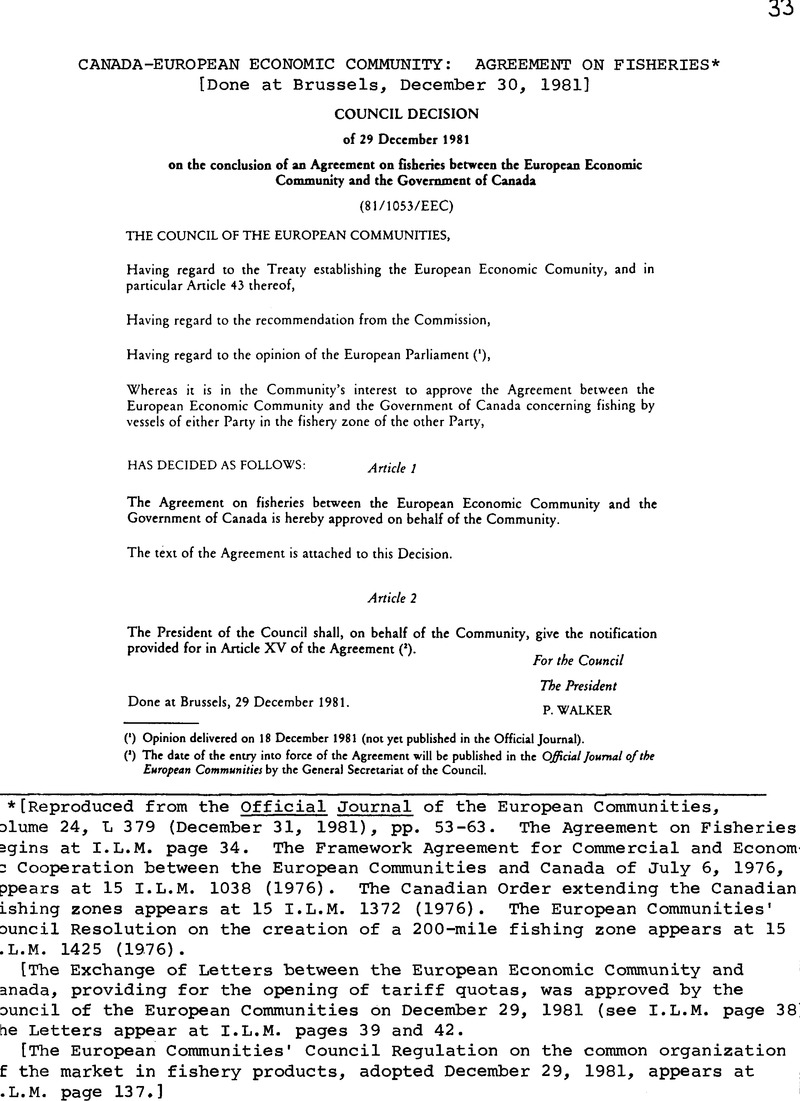No CrossRef data available.
Article contents
Canada-European Economic Community: Agreement on Fisheries*
Published online by Cambridge University Press: 18 May 2017
Abstract

- Type
- Treaties and Agreements
- Information
- Copyright
- Copyright © American Society of International Law 1982
Footnotes
[Reproduced from the Official Journal of the European Communities, volume 24, L 379 (December 31, 1981), pp. 53-63. The Agreement on Fisheries begins at I.L.M. page 34. The Framework Agreement for Commercial and Economic Cooperation between the European Communities and Canada of July 6, 1976, appears at 15 I.L.M. 1038 (1976). The Canadian Order extending the Canadian ishing zones appears at 15 I.L.M. 1372 (1976). The European Communities' council Resolution on the creation of a 200-mile fishing zone appears at 15 .L.M. 1425 (1976).
[The Exchange of Letters between the European Economic Community and anada, providing for the opening of tariff quotas, was approved by the ouncil of the European Communities on December 29, 1981 (see I.L.M. page 38 he Letters appear at I.L.M. pages 39 and 42.
[The European Communities' Council Regulation on the common organization of the market in fishery products, adopted December 29, 1981, appears at L.M. page 137.]
References
(1) Of the species gadus morrhua, North Atlantic cod; imports into the Community will be permitted only when accompanied by a certificate of origin.
(2) The suspension shall apply to fish intended to undergo any operation unless they are intended to undergo exclusively one or more of the following treatment:
– cleaning, gutting, heading, tailing,
– cutting (excluding filleting or cutting of frozen blocks),
– sorting,
– labelling,
– packing,
– iceing,
– freezing,
– deep freezing,
– thawing, separation.
The suspension shall not apply to products intended to undergo one treatment which qualifies for the grant of the benefit of suspension but which is carried out at retail or catering level.
The suspension of customs duties shall apply only to fish intended for human consumption. Checks on their use for this special purpose shall be carried out pursuant to the relevant Community provisions.
(3) Without quantitative limits.




